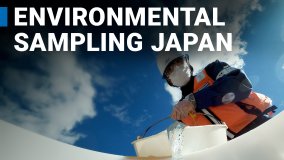Land degradation affects more than 60% of global soil resources, due mostly to intensive agriculture and deforestation. Degraded land influences the lives of more than 1 billion people who rely on this land for food production. To protect and sustainably use the world’s natural resources, countries work with the IAEA and its partners, such as the Food and Agriculture Organization of the United Nations (FAO), toward the United Nations Sustainable Development Goal (SDG) 15 on protecting, restoring and promoting the sustainable use of terrestrial ecosystems, sustainably manage forests, combat desertification, halt and reverse land degradation and halt biodiversity loss.
Experts use nuclear techniques involving certain types of atoms called isotopes, such as nitrogen-15 and carbon-13, to assess soil quality and study how crops take up nutrients, as well as how soil moves. This information helps them to develop efficient soil management and crop production methods. These methods, such as intercropping and terrace building, help people to continue to grow food while conserving soil resources, and in some cases, reversing erosion and preventing soil from polluting water resources.
With the help of nuclear science, experts can also track and stop contaminants from harming the environment. They can identify certain isotopes in different contaminants, such as chemical fertilizers or industrial pollutants, to measure their concentration and trace their source. This kind of data can help decision makers to understand the impact of contaminants and develop policies to protect the environment.
Protecting the environment from radiation contamination is another focus area of the IAEA’s work. In such cases – for example during a nuclear or radiological incident or accident or at former uranium production sites – experts work with the IAEA to assess and safely and effectively remediate the areas. This involves, among others, addressing immediate safety concerns, removing or immobilizing radionuclides and modifying their pathways. The aim is to restore the affected land while protecting the public.





